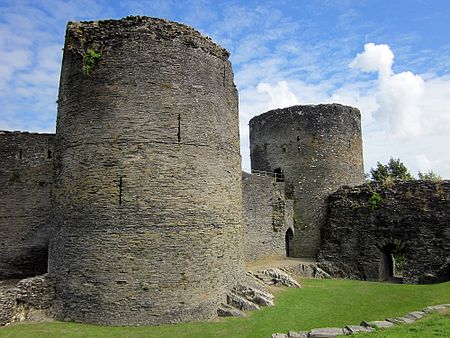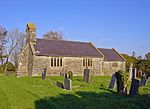Cilgerran Castle

Cilgerran Castle (Welsh: Castell Cilgerran) is a 13th-century ruined castle located in Cilgerran, Pembrokeshire, Wales, near Cardigan. The first castle on the site was thought to have been built by Gerald of Windsor around 1110–1115, and it changed hands several times over the following century between English and Welsh forces. In the hands of William Marshal, 2nd Earl of Pembroke, the construction of the stone castle began after 1223. After passing through successive families, it was left to ruin and eventually abandoned by 1400. The castle backs onto a cliff face, with the remaining ruins dating from the 13th century. It was most heavily fortified where it faces inland, and includes a pair of drum towers, rather than a central keep, which remain standing. It passed into the hands of the National Trust in 1938. It is open to the public and entry is free. Opening times vary.
Excerpt from the Wikipedia article Cilgerran Castle (License: CC BY-SA 3.0, Authors, Images).Cilgerran Castle
Pumporth Lane,
Geographical coordinates (GPS) Address External links Nearby Places Show on map
Geographical coordinates (GPS)
| Latitude | Longitude |
|---|---|
| N 52.057222222222 ° | E -4.6341666666667 ° |
Address
Castell Cilgerran / Cilgeran Castle
Pumporth Lane
SA43 2RU , Cilgerran
Wales, United Kingdom
Open on Google Maps







